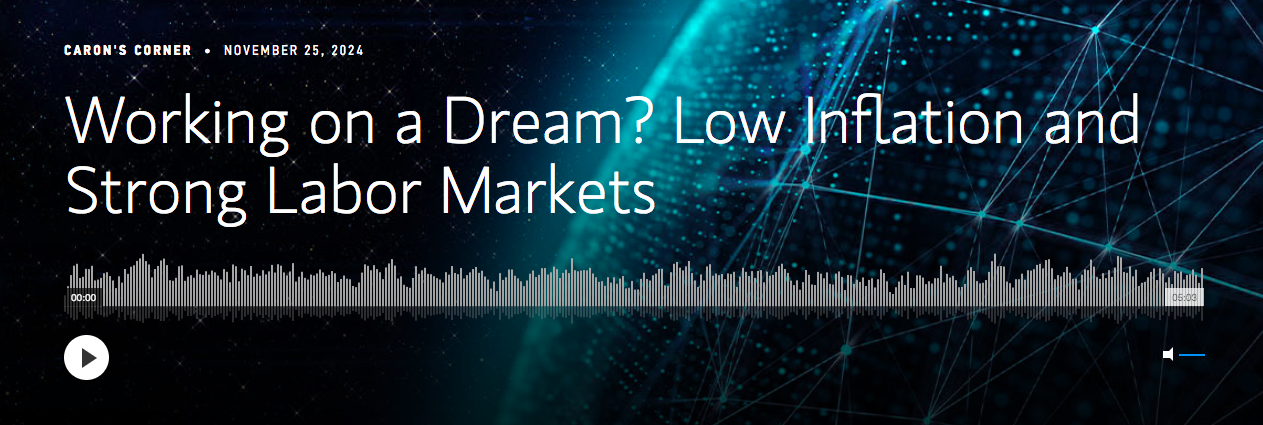
Morgan Stanley IM: Working on a Dream? Low Inflation and Strong Labor Markets

Morgan Stanley IM: Working on a Dream? Low Inflation and Strong Labor Markets
Podcast
Jim Caron, CIO of the Portfolio Solutions Group, shares his macro thematic views on key market drivers.
26.11.2024 | 05:55 Uhr
- The Fed seems to be working on a dream. By preemptively cutting policy rates, they are trying to engineer a low and stable inflation outcome while keeping the labor market strong.
- More often than not a strong labor market drives up wages, which in turn drives up consumption, prices and eventually inflation.
- Starting with JOBS report, coupled with upcoming inflation numbers, the Fed will have more data to see if their dream is becoming a reality.
- We will learn more at the mid-December FOMC meeting and their Summary of Economic Projections (SEP).
- But why wait? The market is already taking positions through its pricing and has come to question whether the Fed will continue to cut rates at that meeting.
- These upcoming data points and the Fed decision and SEP forecasts will set the tone going into 2025.
- So how might the pricing and expectations of Fed policy impact markets? Let's get into it!




Diesen Beitrag teilen: